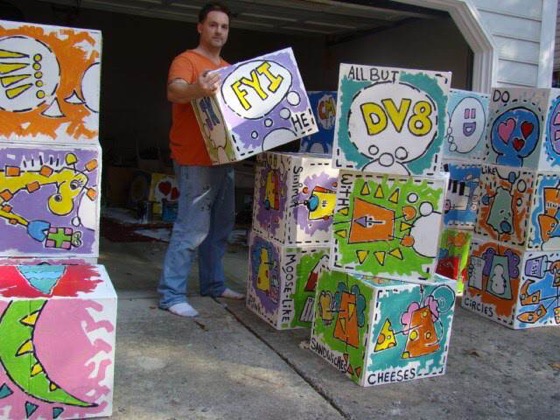Before the days of curriculum, before you sat at the teacher’s desk, before any student had heard your name, you loved making art. You wielded your brush or threw clay like a master. Now, what was once figure drawings of live models has been reduced to doodles of colleagues during staff meetings. What once was the exploration of color on a canvas has been replaced by explanations of tints in tempera. We long for the days when we designed, built and created, but there never seems to be enough time. Instead of making art, our efforts are spent prepping for classes, writing lesson plans and teaching art. However, our pursuit of making art shouldn’t stop because we started teaching.
Here are 5 strategies to get back on track — making art.
1. Set a Space
Before you can start making art, you need a place to make art. While grandiose visions of owning a studio with floor-to-ceiling windows for natural light sound ideal, a more practical space will do. The key is to have an area that is conducive to the creative process. It shouldn’t be a hassle to get started. It should be a place where everything is ready to go.
2. Set a Time
Artists need to make time to make art. Without a scheduled time, it becomes too easy to become distracted by non-art-making activities like doing the dishes, the laundry or watching TV. Make a date with your art supplies. Schedule Tuesday nights between 7pm and 9pm or Saturday mornings between 8am and 11am. The day and time is up to you, but you need to select a specific time and stick with it.
3. Distance Distractions
During the keynote presentation at the NCAEA conference, Jerry Pinkney described his studio. He mentioned there was no phone and no Internet connection, stating he wanted to make sure there were no distractions. In today’s connected world, it is so easy to check Facebook, Twitter or a text. Even though they only take a minute to view, each moment steals away valuable art making time. Another tip is to let your family know that your art making time is important and ask that they please respect that by keeping interruptions to a minimum.
4. Find Support
Like starting an exercise program or quitting smoking, anything that takes discipline is easier with encouragement from a friend. You can garner support in many ways. You might start simply by sharing your weekly accomplishments with another art teacher or be as adventurous as joining a critique group. It doesn’t even need to be local. Artists can set up a joint blog or Facebook group where they can post their art and share virtually.
5. Set Goals
Setting goals can have a big impact when creating art. You should consider setting both short-term and long-term goals. Short-term goals might be as simple as determining a completion date for a piece on which you are currently working. Long-term goals might involve entering an exhibit. The best goals are specific and realistic. It would be better to set a goal of finishing one work in the next three months and entering it in an upcoming juried exhibit than it would be to set a goal of creating an unnumbered body of work for a non-existent solo show. Make sure your goals are attainable. You’ll feel fantastic when you complete them.
It is possible to find a healthy balance between being an art teacher and being an artist. By incorporating these five strategies, the line between the two can not only be reduced, it can become invisible.
What methods have you found helpful to make time for making art?
Those of you that routinely make art, what do you do? We’d love to see a photo in the comments below!
Magazine articles and podcasts are opinions of professional education contributors and do not necessarily represent the position of the Art of Education University (AOEU) or its academic offerings. Contributors use terms in the way they are most often talked about in the scope of their educational experiences.






